Introduction
Understanding property ownership rights requires a grasp of their multi-faceted nature, shaped by statutory and common law. Property ownership encompasses more than just land surface rights; it also includes vertical and subterranean elements. For example, common law historically recognized access to sunlight or wind as limitations on the vertical use of neighboring properties.
With the rise of air travel, airspace above a certain altitude no longer forms part of an individual's property rights. Subsurface rights are similarly detached from surface property rights. This three-dimensional perspective on property rights reflects a modern understanding of ownership.
Additionally, property rights are influenced by collective agreements and legal frameworks that define and regulate relationships between people concerning physical resources. The evolution of collective property rights has led to principles that govern sustainable collective management of natural resources. Property rights can also be influenced by strategic objectives at various governance levels.
Scotland's land reform initiatives aim to address historical land ownership inequalities. Land trusts serve specific purposes, such as anonymizing ownership or conserving natural resources. Open data plays a pivotal role in land administration, but effective data use must be coupled with measures to ensure equity.
In conclusion, property ownership is a complex legal right influenced by historical precedents, collective agreements, and modern legislative frameworks. It extends beyond mere possession to include a range of rights and responsibilities in different contexts.
Understanding Property Ownership
Understanding property ownership rights requires a grasp of their multi-faceted nature, which is shaped by both statutory and common law. Property ownership is not merely a two-dimensional concept concerning land surface rights; it also encompasses vertical and subterranean elements. For example, common law historically recognized access to sunlight or wind as limitations on the vertical use of neighboring properties, often treating these pathways as easements tied to the property rights of adjacent landowners. Conversely, with the rise of air travel, airspace above a certain altitude no longer forms part of an individual's property rights but is rather allocated for public aviation use.
Subsurface rights are similarly detached from surface property rights. Tunnels, for instance, can be constructed beneath private land without infringing on the surface owner's rights, provided they are sufficiently deep. This three-dimensional perspective on property rights is now embedded within the property title systems of numerous countries, reflecting a modern understanding of ownership.
The concept of property rights as a 'bundle of rights and obligations' is also worth noting. These rights, which are not absolute or intrinsic, arise from collective agreements and legal frameworks that define and regulate relationships between people concerning physical resources. Moreover, the evolution of collective property rights, as highlighted by Elinor Ostrom's research, has led to the identification of principles that govern the sustainable collective management of natural resources. These principles, which include clearly defined access rights and use rights tailored to the ecological and socio-economic context, form the foundation for collective property governance.
Property rights can also be influenced by strategic objectives at various governance levels. For example, Scotland's ambitious land reform initiatives aim to address historical land ownership inequalities by providing the government with powers to intervene in large landholdings' sale for public interest. Similarly, land trusts can serve specific purposes, such as anonymizing ownership or conserving natural resources, demonstrating the diversity of ownership structures and their uses.
Open data also plays a pivotal role in land administration, with the potential to enhance decision-making and service delivery in land-related areas. However, there is a risk that open data could exacerbate inequalities if not coupled with measures to ensure effective data use across society's different strata.
In conclusion, property ownership is a complex, multi-dimensional legal right influenced by historical precedents, collective agreements, and modern legislative frameworks. It extends beyond mere possession to include a range of rights and responsibilities that vary in different contexts, from the air above to the ground beneath and the data that represents it.
Fee Simple Ownership
Fee simple ownership represents the highest degree of property control available, conferring upon its holder the entirety of rights over the parcel of land in question. This unbounded form of ownership allows the proprietor to freely sell, lease, or bequeath the property to heirs. In real-world applications, fee simple ownership has far-reaching implications, as illustrated by a case study involving an American resident in Japan who engaged a firm to locate an Akiya (vacant house) that complied with their criteria, culminating in the payment of 220,000 yen to initiate the search. This case underscores the importance of transparent communication and comprehensive understanding of ownership terms, a sentiment echoed by professionals who emphasize that "open and honest communication is vital to ensure everyone's needs and expectations are met." Furthermore, statistical insights reveal that despite the aspiration of 83% of non-homeowners to purchase property, financial barriers remain a significant obstacle. Additionally, the current discourse on property ownership extends to the digital realm, with advocates for cryptocurrencies like Bitcoin arguing that it represents a form of ownership unencumbered by the burdens of traditional property taxes. These perspectives on property ownership are continually evolving, as regulatory landscapes change to accommodate modern realities, such as the ongoing adjustments in Canadian and Ontario real estate laws aimed at bolstering consumer protections and market transparency.
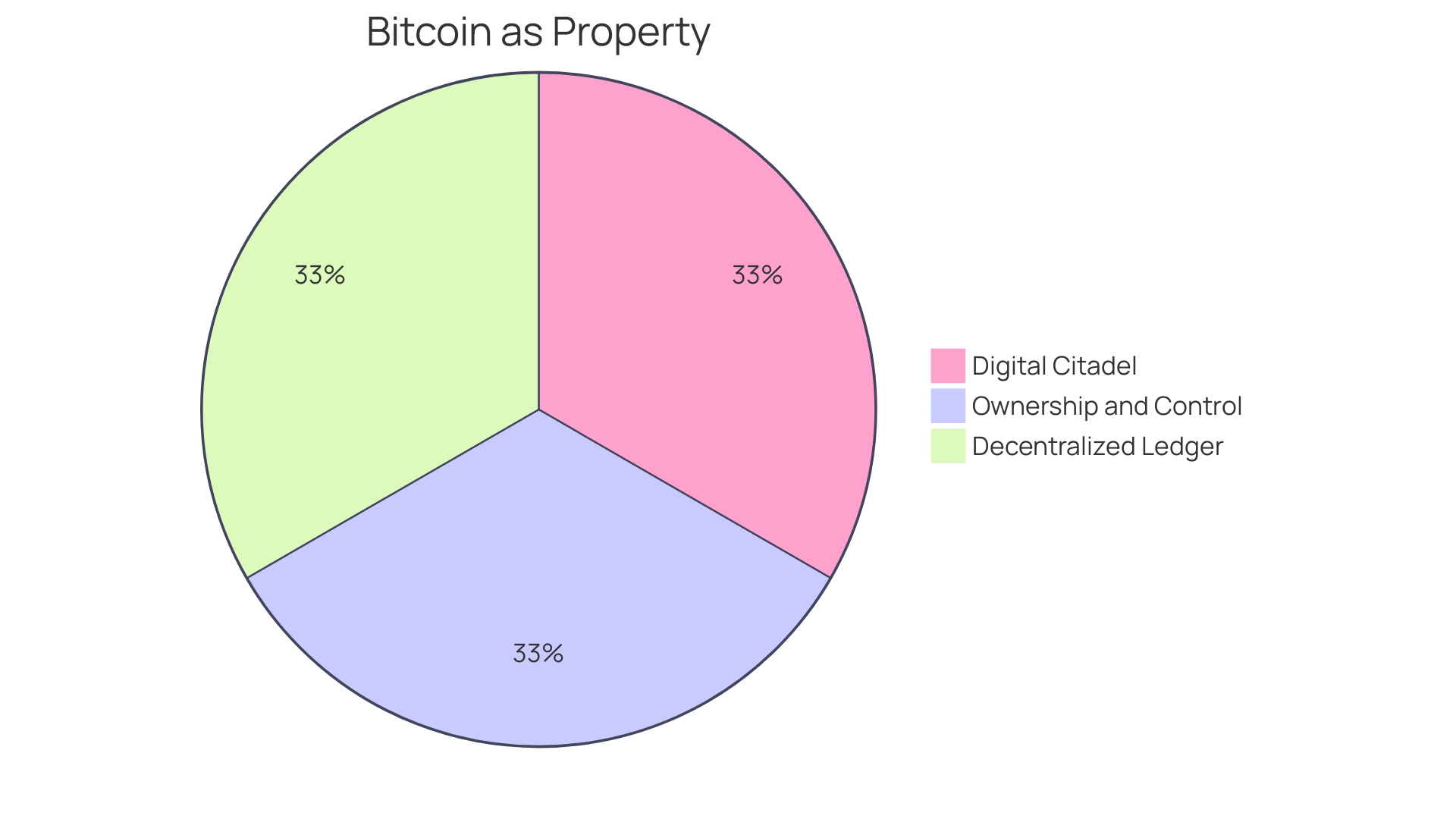
Leasehold Ownership
Leasehold ownership is an arrangement where an individual, known as the lessee, is granted the right to occupy and use a property for a predetermined time, as stipulated in a lease agreement. While the lessee holds these rights, the actual ownership of the property, including the land it sits on, remains with the lessor. This structure is prevalent in both residential and commercial properties, but it's important to recognize its nuances and implications for those involved.
In residential contexts, nearly five million homes in England are held on a leasehold basis, with a significant portion being flats. The leasehold system, deeply rooted in historical practices dating back to the feudal era, evolved significantly after the 1970s as the trend of owning flats surged. However, leaseholders often face challenges, including costly service charges, ground rent, and restrictions on property alterations. For instance, Liz Winstanley's experience with her leasehold flat in Manchester highlights the dependency on managing agents for maintenance issues, which can be cumbersome and delay essential repairs.
Contrastingly, the Shared Ownership scheme presents an alternative, as showcased by Natalie and Richard's journey in Doncaster. By purchasing a portion of their property, they've achieved a balance between affordability and the security of investment in their future. This scheme allows occupants to gradually increase their ownership stake while mitigating some financial pressures.
Additionally, the land lease model offers a unique proposition where individuals own their residence but not the land it occupies. This arrangement, common in manufactured home communities, can significantly lower the cost of homeownership and property taxes, with less maintenance required by the homeowner. However, it's crucial for leaseholders to consider the long-term implications, including the potential complexities in buying or selling a leasehold property, as governmental efforts are underway to streamline these processes.
Understanding these different forms of property rights and their associated responsibilities is key for anyone looking to navigate the housing market, whether for personal occupancy or investment purposes. Each option carries its own set of advantages and drawbacks, and choosing the right path depends on one's financial situation, lifestyle, and long-term goals.
Co-ownership
Co-ownership in real estate is when multiple parties hold ownership over a single property. This collaborative investment strategy allows individuals to combine resources and share the benefits and responsibilities of property ownership. For instance, in co-ownership scenarios, such as the ones facilitated by the innovative company Key, stakeholders agree on the division of equity growth and maintenance costs, providing an alternative pathway to homeownership.
The concept of co-ownership is not new, but it has evolved. Companies like Peerage Capital have leveraged professional partnerships to foster growth in the real estate sector. Their network, consisting of about 7,500 sales representatives across North America, has successfully navigated the complexities of shared ownership, emphasizing the importance of a strategic approach and the right partnerships.
Models like the co-buying approach, pioneered by Pacaso, address the affordability issue in the housing market by enabling individuals to afford a more valuable home than they could on their own. This method has been supported by figures such as Stephen O'Connor, who points out that properties in highly desirable locations are less prone to significant value fluctuations, making shared ownership a prudent financial move for luxury homes.
Furthermore, fractional home ownership, a model where multiple parties share ownership rights, is distinguished from timeshares by the fact that the home is considered a real asset. Whitney Curry, CMO of Picasso, emphasizes that co-ownership allows people to 'right-size' their investment to match actual use, as opposed to owning 100% of a vacation home that remains underutilized.
Shared ownership models are also gaining attention in the media. For example, a heritage home in Toronto, known for its unique side lot and formal gardens, represents the kind of property that could be co-owned, preserving its legacy across generations.
However, successful co-ownership hinges on clear communication and shared financial values among the parties involved. As recommended by experts, discussing finances, debt, savings, and spending habits with potential co-owners is crucial to ensure compatibility and to avoid potential disagreements akin to a 'divorce' in real estate.
The rise of shared ownership also reflects a broader shift in the economy, where experiences and access are increasingly valued over outright ownership. This trend aligns with the goals of many individuals who seek to diversify their investments and connect with their communities without the full burden of traditional homeownership.
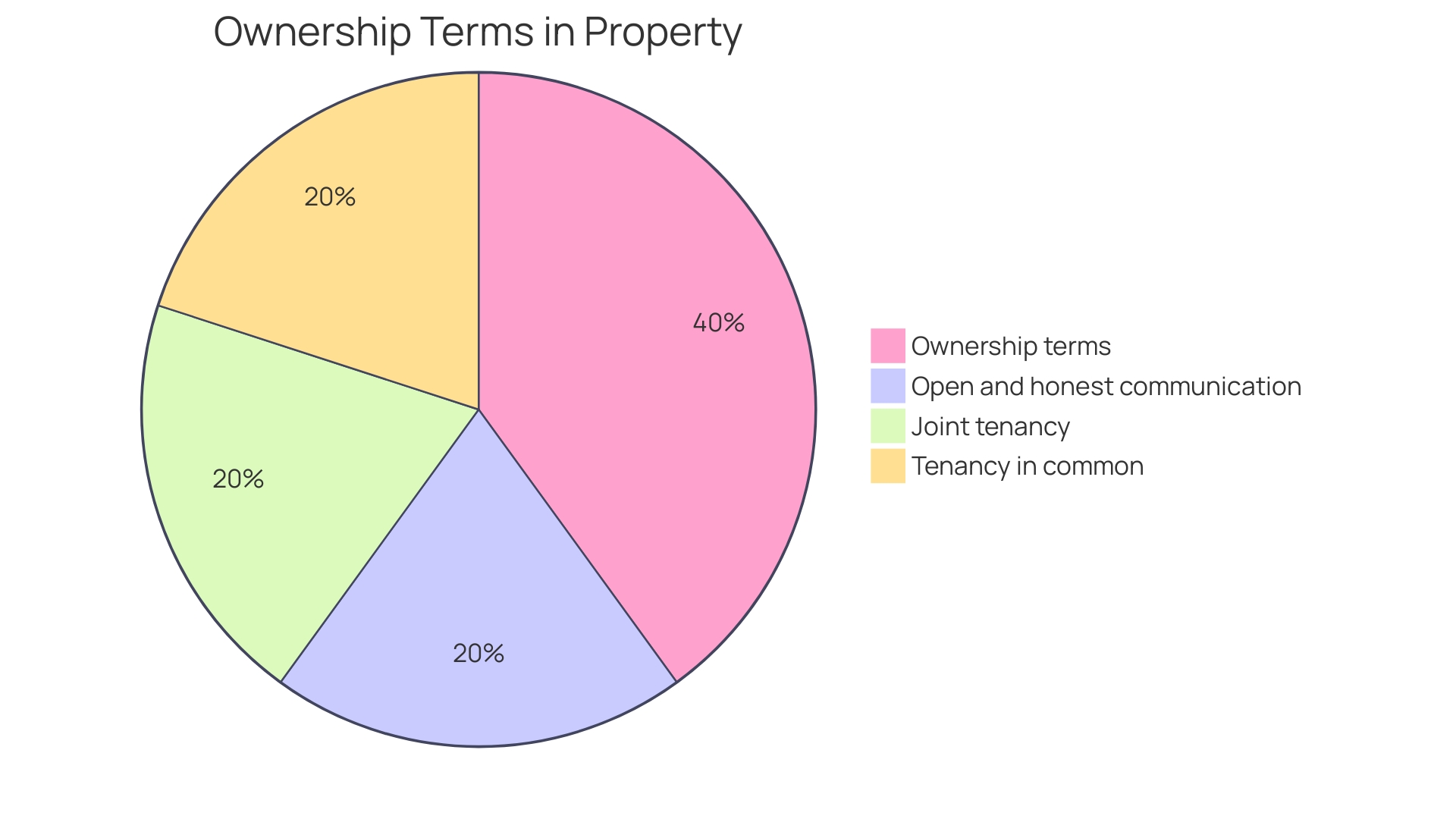
Understanding Local Zoning Laws and Regulations
Understanding local zoning laws and regulations is crucial for any development project. Zoning shapes the urban landscape by prescribing how land may be utilized within a community. It is a framework that maintains order in a city, ensuring that residential neighborhoods are not disrupted by industrial activity and vice versa. From the historical ordinances in Los Angeles in 1904 to modern interactive mapping tools like Mapping, the evolution of zoning reflects the complex relationship between land use and societal needs.
Cities like Somerville, Massachusetts, exemplify the impact of zoning on a community's character and economy. Known for its walkability and vibrant culture, Somerville's high property values signal a strong demand for its lifestyle, shaped by stringent zoning laws. Meanwhile, groundbreaking reforms in Minneapolis demonstrate the power of inclusive dialogue in land use discussions, leading to changes that address housing affordability, racial justice, and environmental concerns.
Zoning classifications range from residential to industrial, each with its own set of regulations that influence what property owners and developers can do. These restrictions can limit commercial and industrial development in certain areas and, at times, restrict the availability of affordable housing. The complexity of zoning is such that it not only affects land development but also intertwines with larger issues like climate change and housing crises.
For instance, urban sprawl, often exacerbated by outdated zoning regulations, contributes significantly to greenhouse gas emissions and climate change. Conversely, efficient zoning can lead to compact, mixed-use communities with numerous benefits including reduced travel distances, improved health outcomes, and greater housing affordability.
While the correlation between regulatory stringency and housing prices is well-documented, the variety of regulations and their mechanisms remain complex. Regulatory decisions at the local level can profoundly influence housing production, real estate taxes, and ultimately, property values. It is, therefore, imperative to understand zoning's multifaceted role in shaping our cities and the rights of property ownership.
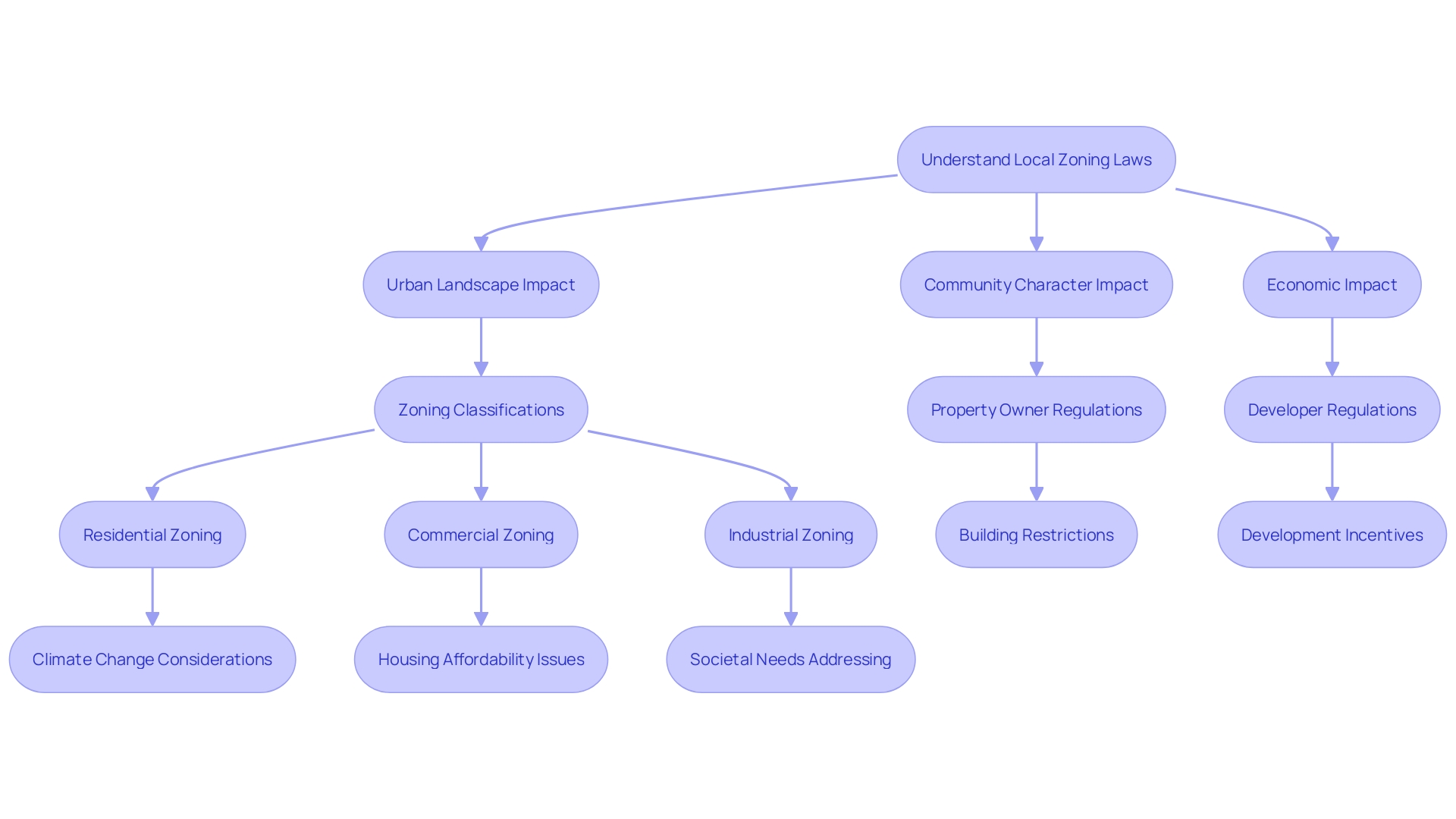
Purpose of Zoning
Zoning regulations serve as a blueprint for community growth, promoting harmony between new developments and existing structures while safeguarding public welfare. The division of land into zones, each with tailored permissible uses and construction guidelines, creates a structured environment. These zones range from residential to commercial, and more recently, mixed-use districts that marry living spaces with shops and amenities, fostering walkable neighborhoods. Contemporary zoning has evolved from its early 20th-century origins, with a focus on placemaking and context-specific regulations that encourage desirable community features, as seen in the Vision 2050 and Orange Code initiatives.
One innovative tool for shaping development is the 'pattern book,' which provides a range of pre-approved designs for house-scale multi-unit dwellings, ensuring they integrate seamlessly into neighborhoods. These plans illustrate how new housing, such as duplexes and quadplexes, can maintain a residential feel without overwhelming the streetscape or appearing as out-of-place apartment blocks. The pattern book is a tangible expression of zoning's evolving role in fostering attractive, safe, and livable communities.
As population growth and housing needs present challenges, municipalities are revisiting zoning ordinances. For instance, Charlottesville's recent overhaul of its zoning rules aims to increase residential density and offer affordable housing options, reflecting a dynamic approach to zoning that responds to changing urban landscapes and societal needs. By granting development rights and offering incentives, cities are actively shaping the future of housing, demonstrating zoning's crucial part in orchestrating the living spaces of tomorrow.
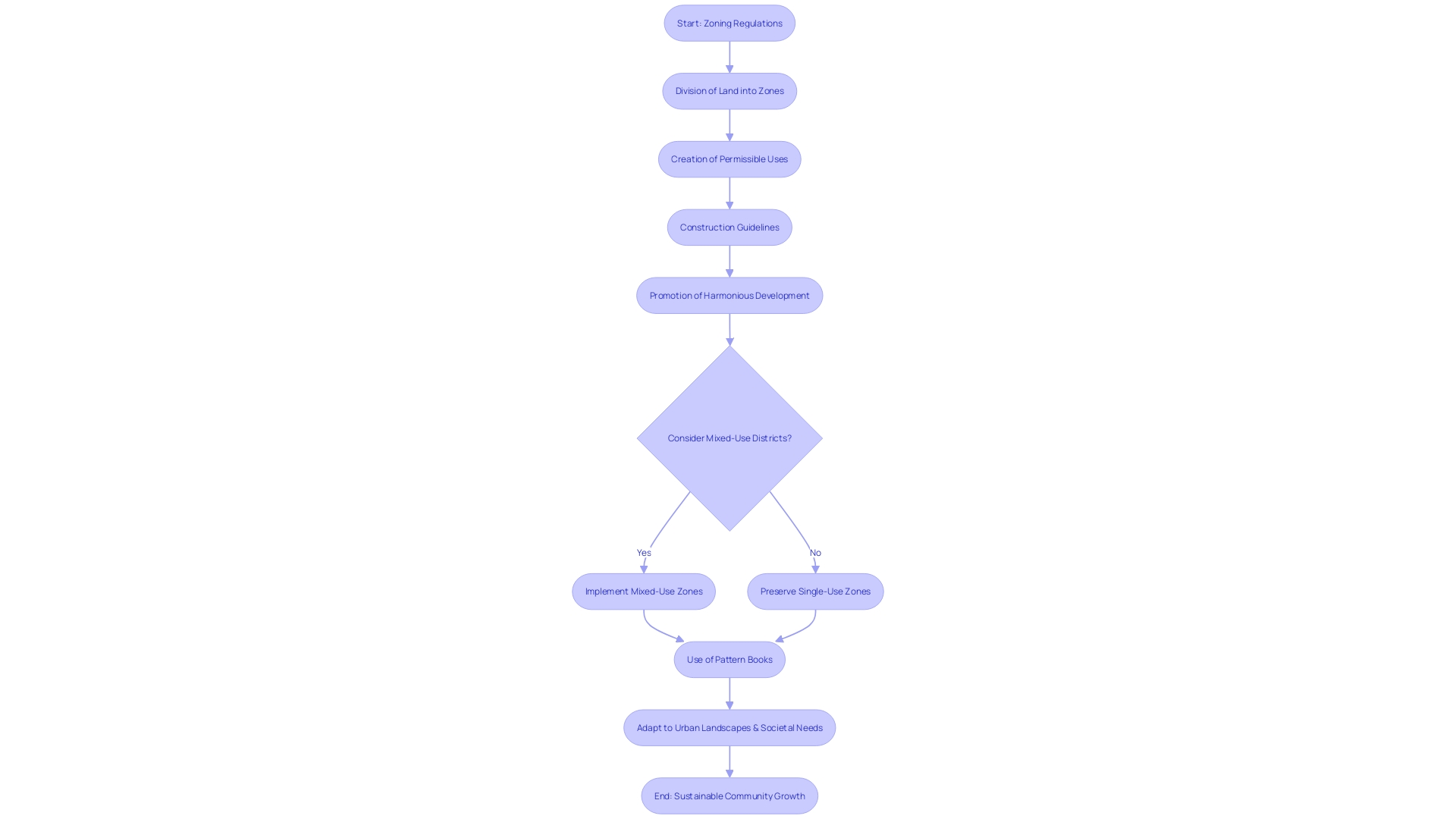
Zoning Districts
Zoning districts serve as the building blocks of urban planning, each with regulations tailored to their designated purpose, be it residential, commercial, industrial, or agricultural. These regulations meticulously govern the development of land within each zone, dictating criteria such as the permitted types of buildings, maximum building heights, required setbacks from property lines, population density, and other essential development factors. This legislative framework ensures land use is optimized and conflicts between different land uses are minimized, safeguarding the quality of life for residents and the viability of businesses.
For example, the city of Minneapolis undertook a substantial zoning reform aimed at addressing housing affordability, racial justice, and environmental concerns. This reform was largely influenced by engaging community members who are often underrepresented in land use discussions. Similarly, in Charlottesville, a significant overhaul of the city's zoning regulations was approved to facilitate the creation of more affordable housing units.
Moreover, a comprehensive study of zoning practices across the U.S. has yielded a database describing key zoning code elements and their constraints for over 2,600 municipalities. This includes data on minimum lot sizes, maximum density, parking requirements, and height restrictions, among others.
These examples illustrate the dynamic nature of zoning regulations and their profound impact on shaping our communities - from the distribution of single-family homes in California to the pioneering zoning justice initiatives that strive to restore property rights and promote individual freedom.
Conditional Use Permits
Conditional Use Permits (Cups) are essential tools in urban planning and development, enabling certain land uses that are not typically allowed by right within a specific zoning district. By navigating the intricacies of Cups, practitioners can ensure that the unique needs of a community are met while maintaining compliance with local zoning regulations. These permits are not handed out indiscriminately; they are the result of a meticulous review process designed to assess the suitability of the proposed use in the context of its potential impact on the surrounding area.
The conditions and limitations attached to CUPs serve as a balancing act, mitigating any adverse effects the land use may have on the neighborhood. Considerations such as traffic flow, noise levels, and environmental impact are scrutinized to protect the area's character and livability. It's not just about facilitating development; it's also about preserving the quality of life for residents and ensuring equitable treatment of property owners.
Legal precedents reinforce the importance of fairness in this process. The Supreme Court has repeatedly emphasized that permit fees and conditions must be proportional to the actual public costs incurred by new development to avoid constitutional violations. Arbitrary or excessive demands from government entities can be legally challenged, as they may constitute an unjust taking of private property without due compensation.
In recent news, public participation in the zoning amendment process is encouraged, emphasizing the importance of community input. For instance, written comments for a Zoning By-law Amendment in Guelph were solicited ahead of a specified deadline, highlighting the democratic aspect of land use decisions. This participatory approach ensures that the voices of affected parties are heard before final decisions are made.
Understanding CUPs is not only crucial for developers and legal practitioners but also for the community at large. As multifamily housing developments and other projects continue to reshape urban landscapes, the role of Cups in balancing diverse interests becomes even more significant. They stand as a testament to the dynamic and often complex relationship between land use regulation and property rights.
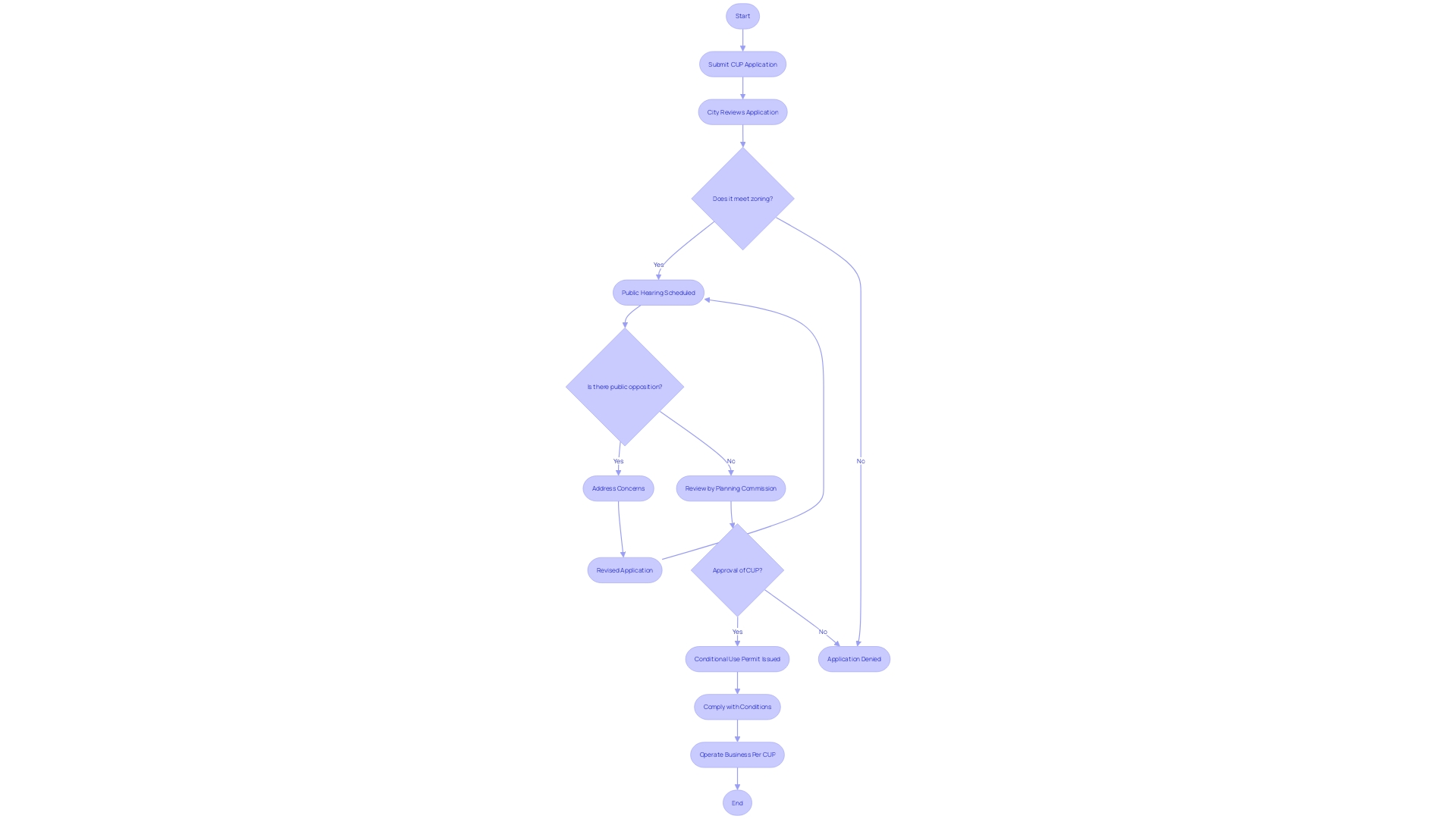
Key Elements of Land Use and Zoning Regulations
Grasping the intricacies of land use and zoning regulations is crucial for understanding property ownership and the controls over land use. There are several layers to these regulations that one must consider:
-
Zoning Overview: Zoning categorizes land to ensure that new developments harmonize with existing ones. It dictates permissible uses for parcels of land, ranging from residential to industrial zones. For instance, zoning can restrict the construction of commercial buildings in residential neighborhoods or limit the development of affordable housing.
-
Comprehensive Plans: These plans showcase the intended long-term land use for each parcel, influencing zoning classifications and the set of rules for current land use. They encompass policies on various community aspects, such as housing and parks, which are organized by chapters within the plan.
-
Property Ownership Rights: Traditional views on property rights encompass the rights to possess, use, exclude, and transfer property. Historical zoning and land-use laws, influenced by these principles, have perpetuated inequality, as noted in legal discourse on the intersection of race, property, and planning.
-
Current Trends: As cities evolve, zoning ordinances are subject to change, reflecting the community's needs. For example, cities like Charlottesville are revising zoning laws to increase residential density and offer development bonuses for creating below-market housing units.
Real-world applications of these principles are evident in the zoning reform efforts in Minneapolis, which aimed to address housing affordability and racial justice, and in California, where comprehensive data on single-family-only zoning was collected for an extensive number of municipalities.
It is essential to acknowledge that zoning deeply affects our daily lives, dictating where we can live, work, and relax. While zoning aims to plan community growth, it is often a complex system of regulations that can seem arbitrary but is rooted in foundational concepts of property rights.
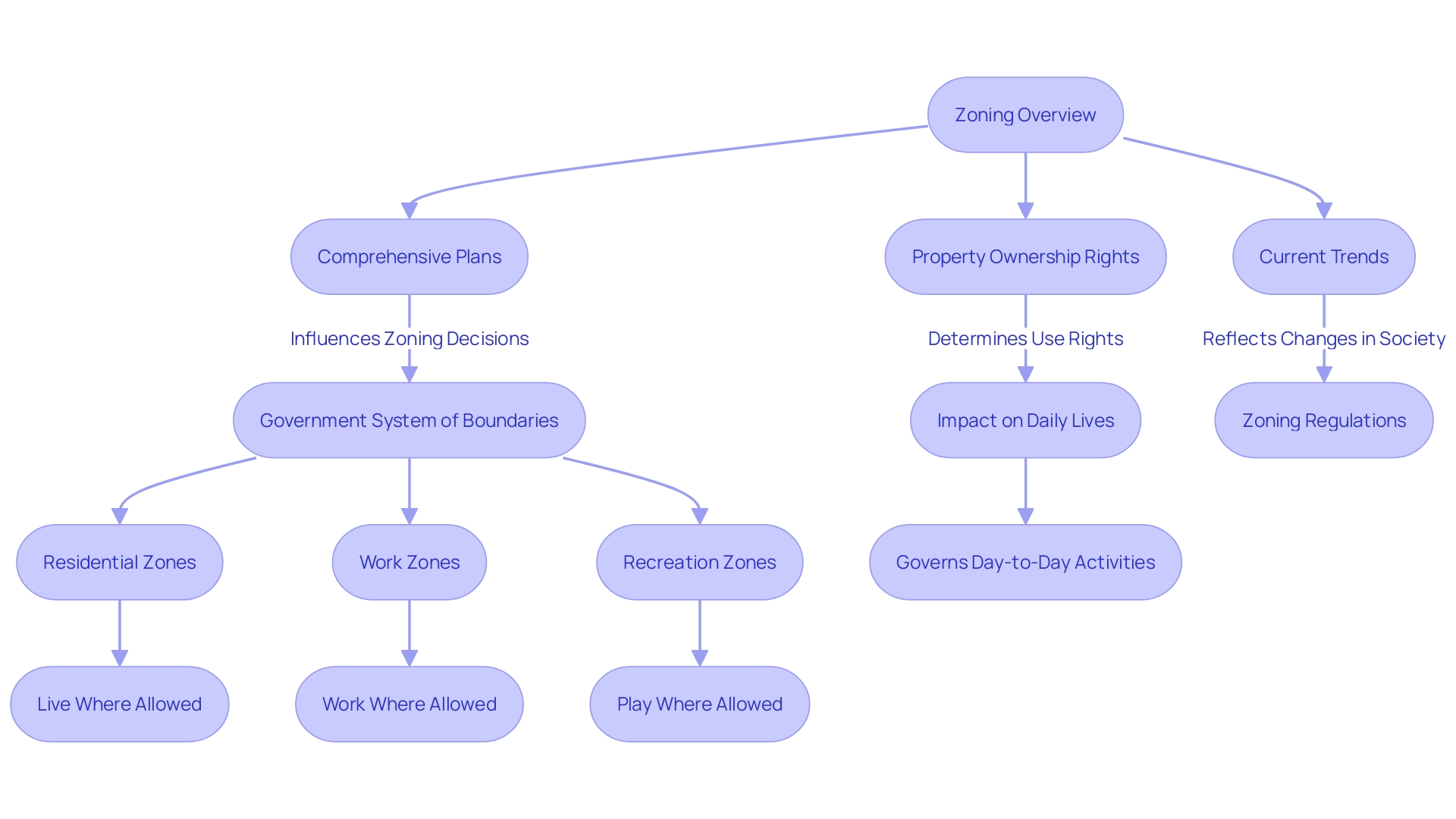
Permitted Uses
Land use regulations serve as the blueprint for how properties within different zoning districts can be utilized, outlining permissible uses such as residential, commercial, or industrial. The intricacies of these regulations become evident when considering formula retail uses, as defined under Section 303.1 of the San Francisco Planning Code. This classification encompasses retail businesses with over ten locations globally, featuring uniform characteristics such as merchandise, façade, décor, apparel, signage, and trademarks. Upon qualifying as Formula Retail, businesses are subject to additional regulations that vary based on the zoning district, ensuring that local aesthetics and character are maintained.
The impact of zoning regulations is profound, as seen in recent amendments in cities like Mountain View and Spokane. Mountain View's Environmental Planning Commission has undertaken a comprehensive revision of its zoning code to align with state law and provide clear guidance for development. Spokane has taken bold steps by implementing the Building Opportunities and Choices for All initiative, allowing a variety of residential buildings in all zones, which is recognized as a significant move to boost housing availability and affordability.
These regulatory changes are reflective of a broader trend, as highlighted by the Provincial Planning Statement (PPS), 2024. The PPS directs municipalities in Ontario to adopt land use planning policies that facilitate housing development, economic growth, and environmental protection. Such policies are instrumental in planning for current and future infrastructure needs, making land available for development, and steering development away from hazardous areas.
However, it's crucial to acknowledge the historical context of zoning and its implications on property rights, especially concerning the right to exclude, which has been intertwined with race and inequality. As Williams et al. explain, the notion of "whiteness as property" has evolved into the "Whiteness of property," influencing zoning and land-use laws to perpetuate exclusionary practices.
In California, the vast array of municipalities presents a challenge in studying zoning practices. Despite this, research has shown that single-family-only zoning is prevalent, affecting the landscape of housing and development. Recent legislative changes require municipalities to establish Transit-Oriented Development Areas (TOD Areas) near transit hubs, mandating minimum density levels and other regulations to promote sustainable growth.
These examples underscore the complexity and dynamic nature of land use regulations, which serve not only as tools for urban planning but also as reflections of societal values and historical legacies.
Setbacks and Building Heights
Understanding zoning regulations is crucial for land development, as these rules dictate the permissible use of land, the size and placement of buildings, and the overall density of a given area. One aspect of zoning that significantly impacts the design and placement of buildings is the establishment of setbacks. Setbacks are essentially buffer zones, defining the required space between a structure and the property line, public roads, or adjacent buildings. These regulations serve multiple purposes, including ensuring access to light and air, providing privacy, and maintaining the character of neighborhoods.
In some cases, the impact of setbacks on land use and building design can be substantial. For example, a development code with minimal setback requirements could allow buildings to be constructed closer to the property line, which could increase the buildable area on a lot but potentially affect the quality of the surrounding space. This was evident in Boise, where a reduction in setbacks altered the visual and physical landscape of neighborhoods, raising concerns among residents about the adequacy of public involvement in these changes.
Building height regulations are another critical element of zoning codes. These rules limit the maximum height of structures within a zoning district, which is instrumental in preserving the aesthetic harmony of an area, protecting views, and preventing the overshadowing of neighboring properties. Height regulations can have a profound effect on the urban skyline and the feel of a community. For instance, detailed work on minimum height requirements around transit stops in Toronto showed how these policies could influence development patterns and urban density.
Moreover, the design of buildings is often influenced by various building codes and economic factors. A case in Minneapolis highlighted how building codes, by requiring two staircases in structures above three stories, inadvertently promoted a particular form of apartment building with long hallways and limited exterior openings, affecting both the quality of living spaces and the types of units available.
Furthermore, the environmental impact of construction, such as the energy consumption in public swimming baths or the removal of mature trees for new developments, illustrates the complexity of land use decisions. Policy decisions must balance development needs with sustainability and community impact, as seen in the Finnish study on energy consumption and the concerns raised over tree removal for a spa development.
In conclusion, setbacks and height regulations are not merely technical details of urban planning; they shape the physical and social environment of our communities. It is essential to consider the implications of these zoning elements carefully, as they have the power to transform the landscape and the lives of those within it.
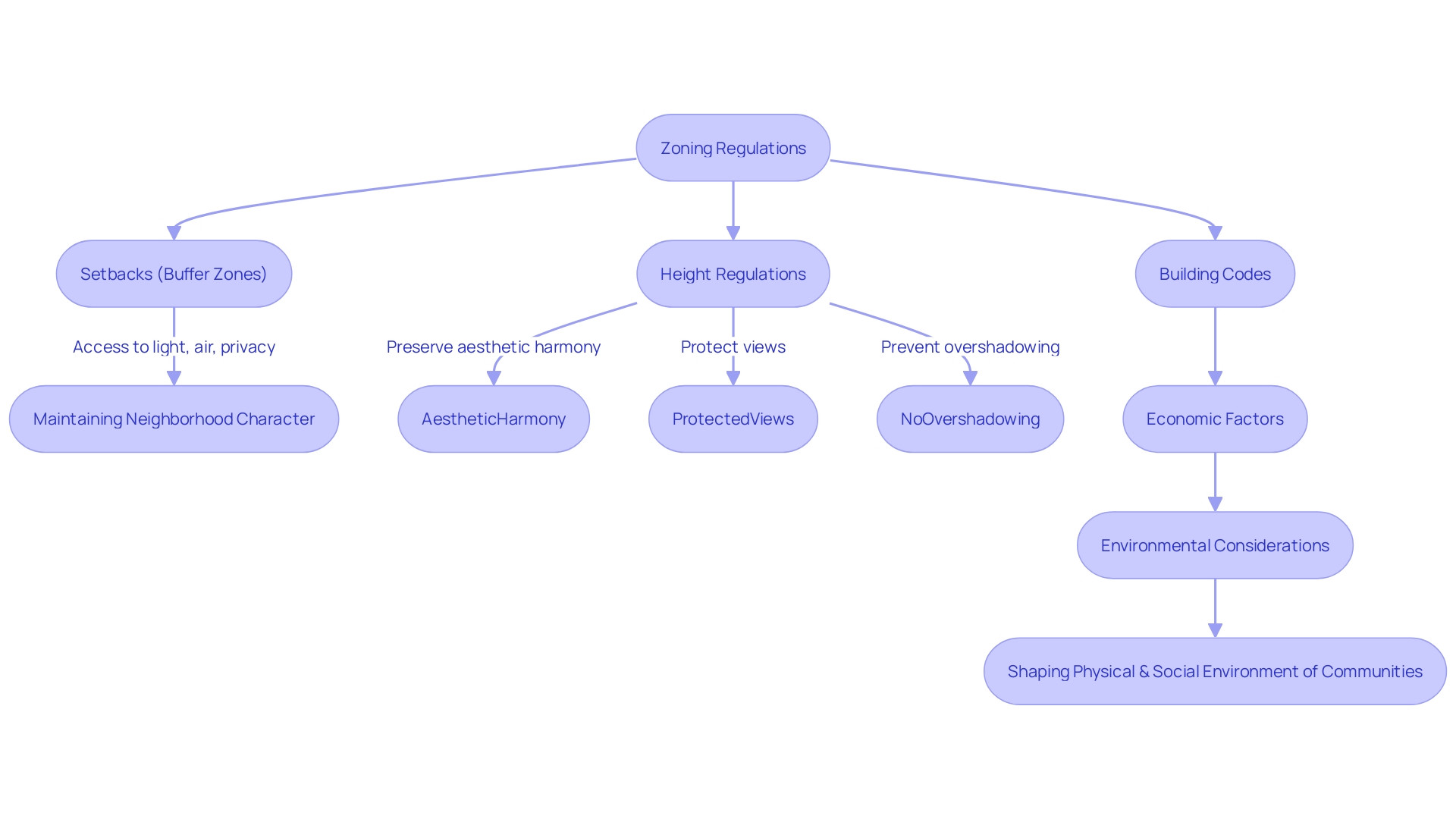
Parking and Access Requirements
To effectively manage land use, urban planners employ zoning regulations that dictate the number of parking spaces required for different types of developments. This ensures that there is adequate parking while maintaining safe vehicular circulation. The specific requirements for parking spaces are determined by factors such as the land use type—be it an office building, a restaurant, or a recreational facility—and the size of the development, measured in gross floor area, number of employees, or maximum occupancy as per fire codes.
For example, a city's zoning code might stipulate that a sit-down restaurant provide ten parking spaces for every 1,000 square feet of space. These regulations originated in the mid-twentieth century, a time when the urban landscape was being reshaped by the rise of the automobile. Planners were faced with the challenge of traffic congestion caused by an inadequate supply of on-street parking, leading to the introduction of off-street parking mandates for new developments.
However, these traditional parking mandates have often been criticized for not being grounded in reliable data or comprehensive cost-benefit analyses. Recent discussions and policy shifts, such as those in the City of Eugene, illustrate a movement towards more flexible parking standards. As of January 1, 2023, Eugene has removed off-street parking minimums within close proximity to frequent transit corridors, allowing developers to assess and provide parking based on actual demand and project specifics, rather than arbitrary numbers. This change also brings environmental considerations into focus, with requirements for tree canopies or solar panels in new large parking lots.
Such innovative approaches to urban planning recognize the diverse needs of modern cities, aiming to strike a balance between the availability of parking and the benefits to local communities. By monitoring the impacts of these changes and gathering data on their effectiveness, urban planners can refine their strategies to support sustainable development and enhance urban living.
Types of Zoning Districts and Their Regulations
Zoning intricacies are a foundational aspect of urban development and planning. Each district is crafted with specific guidelines to ensure the land is utilized according to its designated purpose. For example, residential zones are tailored to foster community living environments, while commercial zones prioritize economic activities and services.
Across the United States, zoning efforts have evolved to address the changing demographics and needs of communities. California, with its vast population and diverse landscape, presents a unique case. In an extensive study covering the majority of California's municipalities, it was revealed that zoning restrictions are a key factor in the development process, influencing the types of housing and businesses that can be established in particular areas.
Furthermore, recent legislative movements have aimed at zoning and land use reform as critical steps towards increasing development, especially affordable housing. Despite the challenges, the Urban Institute found that relaxing land use restrictions nationwide led to an average housing supply increase of 0.8% over a medium-term period. While seemingly modest, this increment reflects gradual yet meaningful progress in expanding housing availability.
The complexity of zoning is encapsulated by the patchwork of regulations that govern land use. These rules intricately dictate where we can reside, work, and relax. Historically, the concept of zoning was foreign to the early American ethos, which revered the natural right to use one's property as they saw fit. This underscores a significant shift from the belief in inherent property rights to modern zoning practices that delineate specific uses.
Recent developments highlight the dynamic nature of zoning laws. In Charlottesville, for instance, a comprehensive overhaul of zoning regulations aims to facilitate the construction of affordable housing units, reflecting a proactive approach to urban planning and community development. Similarly, mayors in British Columbia are advocating for zoning adjustments to address housing challenges, illustrating a trend towards more inclusive and versatile housing solutions.
For those seeking to navigate the zoning landscape, tools like MapLink offer interactive maps that delineate zoning districts, assisting property owners and investors in making informed decisions. The intricate web of zoning regulations continues to be reevaluated and reformed, demonstrating the ongoing effort to balance property rights with community planning and development.
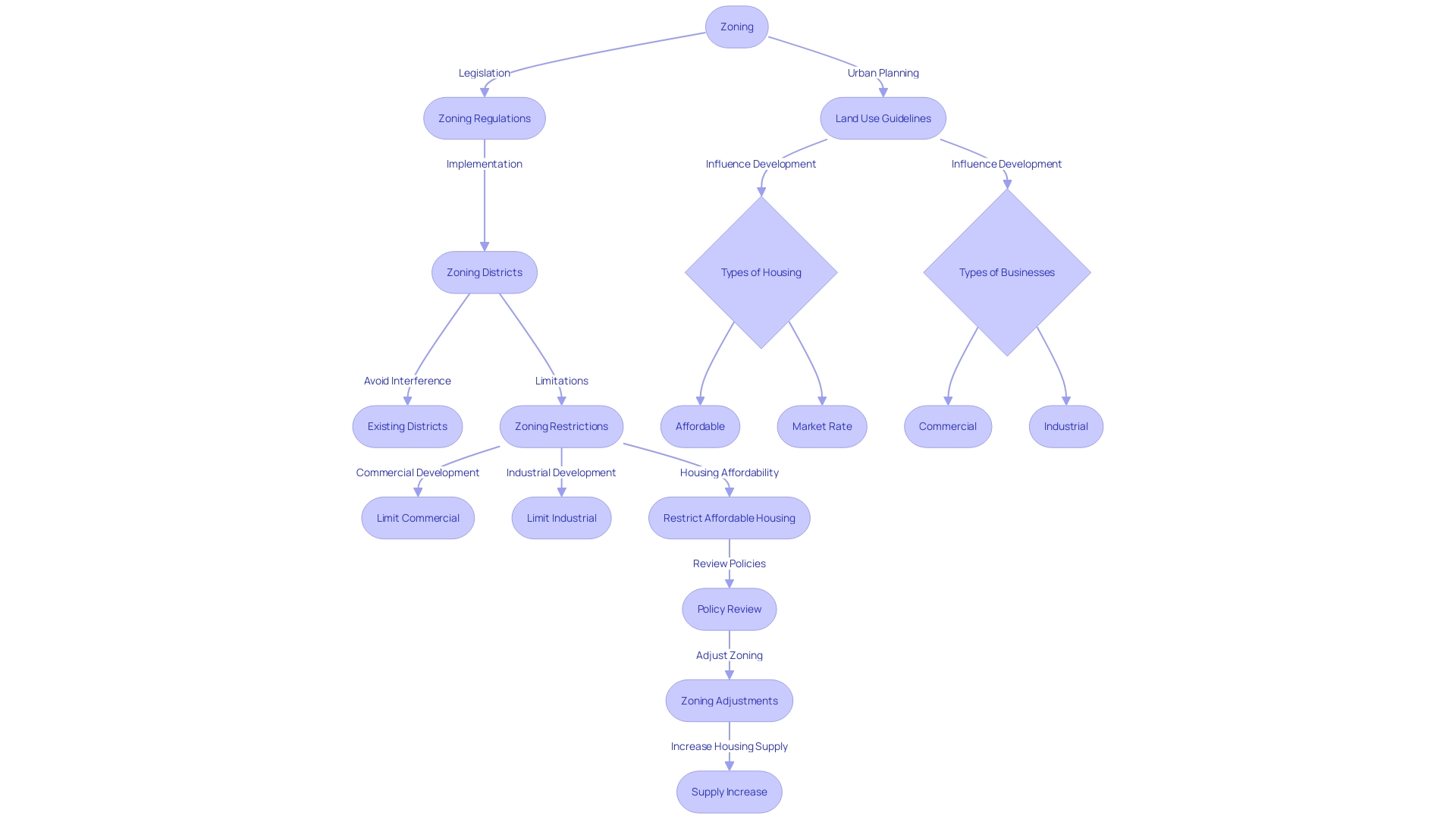
Residential Zoning Districts
Residential zoning districts play a critical role in shaping the communities we live in, primarily by setting forth clear parameters for housing developments. Such districts ensure that residential areas can adequately provide for their residents by stipulating minimum lot sizes, which in turn influence the density of the neighborhood. Building setbacks, which determine the distance a structure must be from the property line, are also crucial as they affect privacy, safety, and the overall aesthetic of an area. Additionally, maximum building heights are regulated to preserve the character of a community and ensure that sunlight and airflow are not unduly obstructed. These regulations collectively contribute to the quality of life in residential zones, balancing community needs with environmental and aesthetic considerations.
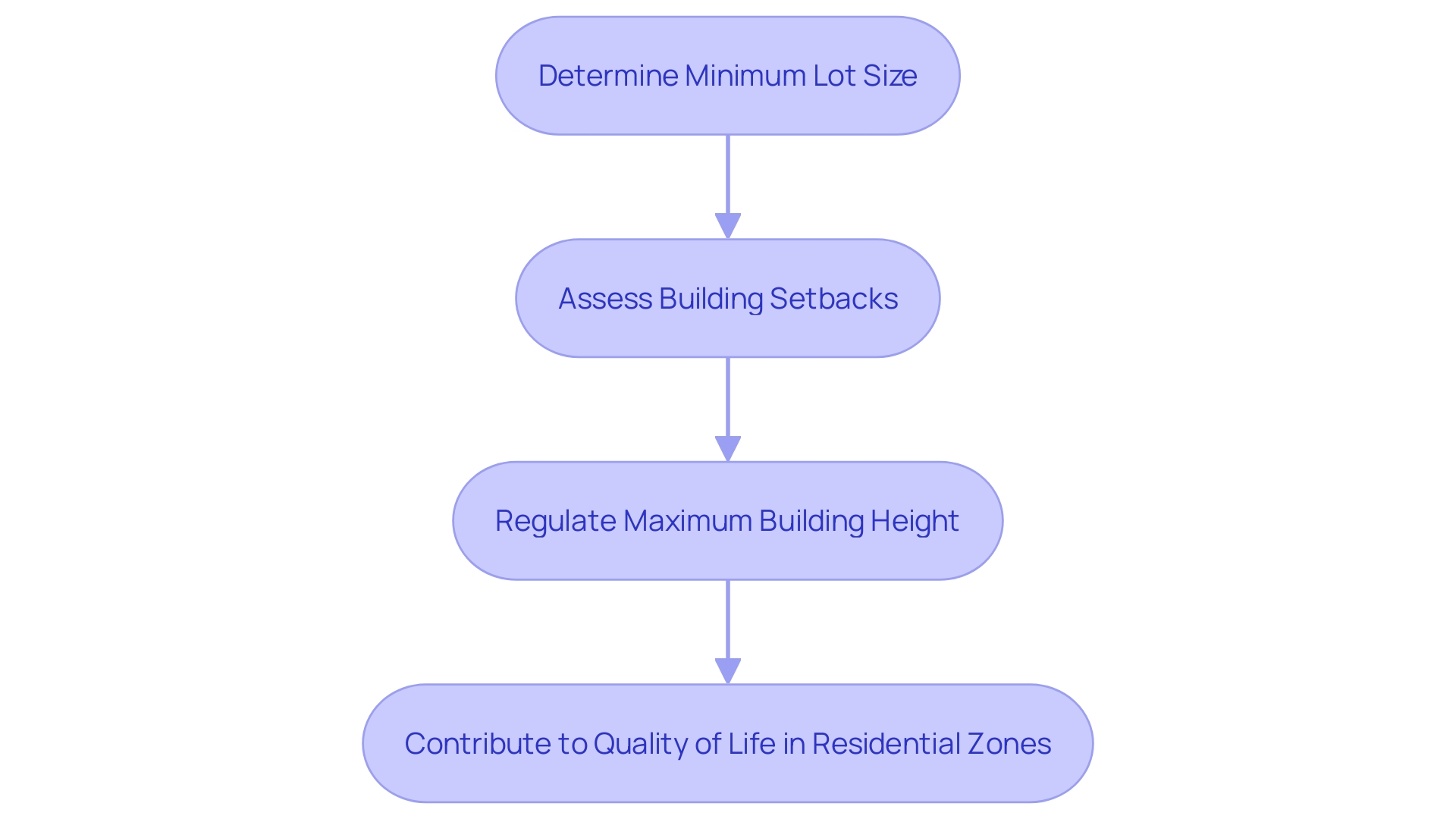
Commercial Zoning Districts
Zoning is a fundamental aspect of urban planning which dictates land use and development. Commercial zoning districts, specifically, are crafted to foster business growth while maintaining an orderly city landscape. These districts come with specific regulations that reflect the nature of commercial activities, ensuring that businesses can thrive without infringing on other land uses.
For instance, building sizes within commercial zones are regulated to align with the urban infrastructure and aesthetics, allowing for ample space and functionality without overwhelming the surroundings. Parking requirements are also a critical component, designed to accommodate the anticipated influx of customers and employees, thereby reducing traffic congestion and improving access to commercial services.
Furthermore, signage within commercial districts is subject to guidelines, which aim to provide clear information while preserving the visual appeal of the area. These regulations not only help in maintaining a cohesive look but also prevent visual clutter that could detract from the neighborhood's character.
Permitted commercial uses are another key element, ensuring that the types of businesses operating in a particular district are compatible with each other and with the overall plan for the area. This compatibility is crucial not only for the businesses themselves but also for the community that interacts with and relies on these commercial services.
In essence, commercial zoning is designed to balance the needs of businesses with those of the local community, creating an environment where both can coexist harmoniously. As the urban landscape continues to evolve, these regulations play a pivotal role in shaping the future of our cities.
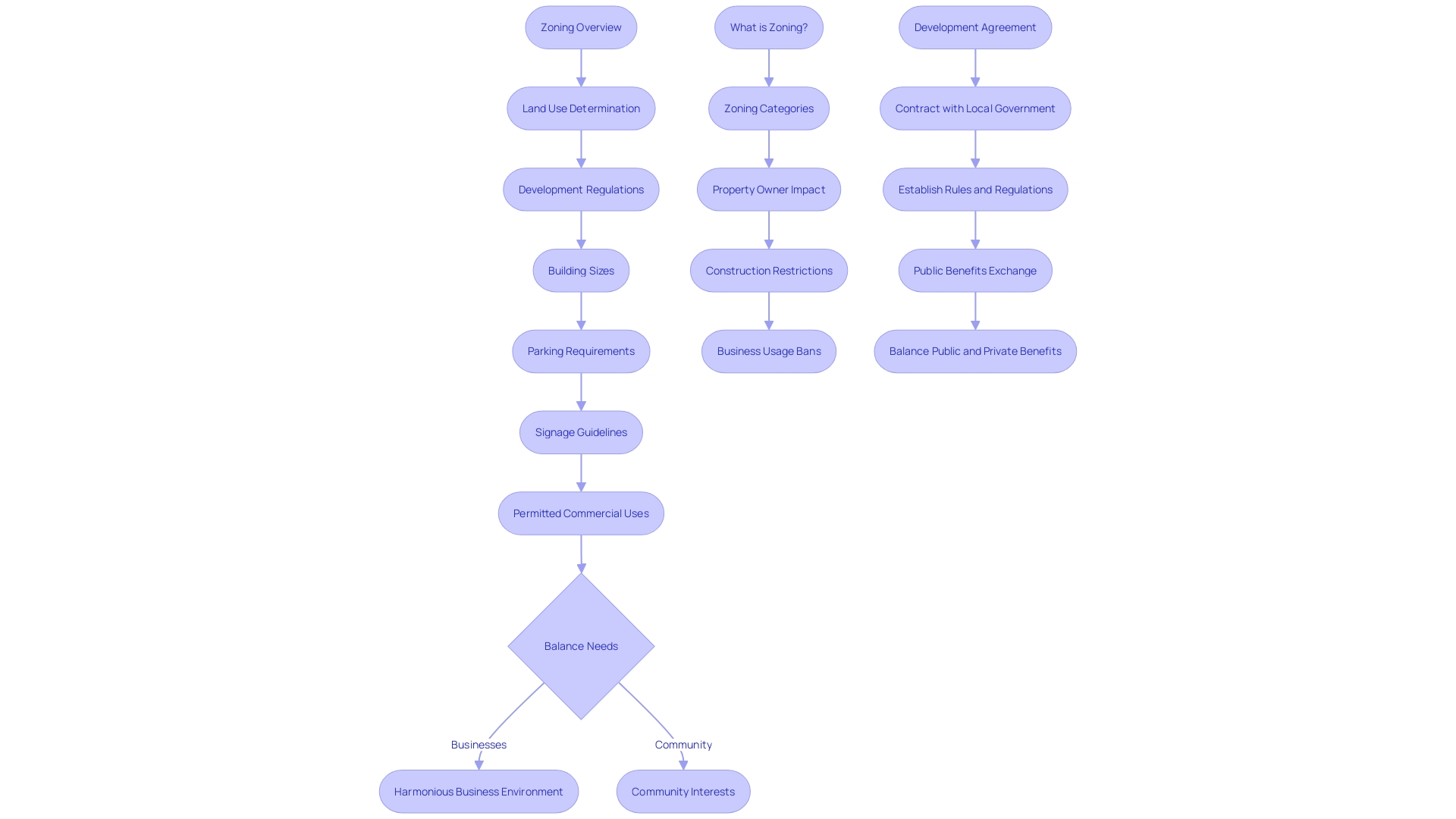
Industrial Zoning Districts
Industrial zones, designated for manufacturing and industrial operations, are crucial for the backbone of urban development. These districts are regulated to mitigate their impact on their surroundings, with measures in place to manage noise levels, air and water pollution, and ensure appropriate distances from residential zones to maintain quality of life. Moreover, there are stringent restrictions on the storage and use of hazardous materials to safeguard public health and safety.
Industrial zoning doesn't only serve to protect residential areas but also plays a pivotal role in economic growth and urban planning. It ensures that industrial activities don't interfere with existing land use and supports the city's economic engines while considering the long-term implications for urban development. New York City's recent 'City of Yes for Economic Opportunity' initiative exemplifies this approach, enhancing industrial sectors while fostering vibrant neighborhoods and supporting emerging industries.
Historically, zoning has shaped land use significantly, starting with a landmark Supreme Court decision in 1926. It has evolved into a complex system, reflecting the changing dynamics of our society and economy, including addressing racial and economic disparities. As wealth accumulation patterns have shown, zoning laws can inadvertently contribute to social inequalities, highlighting the need for continuous review and revision of these regulations to promote more equitable outcomes.
The Toronto Region Board of Trade has identified an urgent need for space that accommodates business growth, particularly in manufacturing and logistics, underlining the importance of industrial zoning in economic sustainability. This is not just about attracting large companies but creating a network of investments and collaborations across various sectors, ensuring a robust industrial base for the future.

Common Requirements Found in Local Zoning Ordinances
Zoning ordinances serve as the blueprint for municipal land use, delineating how property owners can utilize their land. These regulations are crafted to ensure orderly development without interfering with existing land usage, aiming to maintain district harmony and support urban planning objectives. Through a blend of public and private regulatory measures, zoning impacts various facets of community life, from housing affordability to business operations.
Key elements within these ordinances often dictate the minimum lot size, maximum building density, and specific requirements like parking allocations. Such parameters are not standardized; they may vary significantly, referencing a range of metrics including building size, the nature of business operations, or employee numbers. The precision of these regulations, while appearing exact, may lack practical significance and can sometimes be seen as arbitrary constraints on property use.
For instance, as noted by legal expert Brian J. Connolly, zoning reforms can face legal challenges, suggesting a need for careful planning and defense strategies. Connolly's extensive experience encompasses representing clients in complex zoning and planning issues, highlighting the intricate relationship between land use regulations and broader societal concerns such as housing affordability and urban redevelopment.
Moreover, current trends in zoning reflect an evolving landscape. Some municipalities are actively rewriting zoning codes to implement comprehensive plans that allow for increased residential density and provide development incentives. These changes are responsive to shifting urban needs and are part of a broader dialogue on how to best accommodate growth while preserving community character.
As urban environments continue to transform, zoning and land use policies remain pivotal in shaping the cities of tomorrow. Despite the challenges, these regulations provide a framework for sustainable development, balancing private property rights with the collective interests of the community.
Site Plan Review
The intricacies of land development encompass a myriad of steps, one of which is the critical site plan review process. This methodical evaluation ensures that any proposed construction is in harmony with existing zoning laws, municipal codes, and other pertinent guidelines. Prospective projects necessitate the submission of comprehensive architectural and engineering documents to local planning entities, who meticulously scrutinize these proposals.
Drawing from the professional journey of Van Schaack, with experiences ranging from Boulder's push towards digitizing planning processes to Denver's efforts in streamlining regulations to foster urban density and affordability, it's evident that the site plan review can vary greatly in complexity and duration. Van Schaack's career illustrates that while some jurisdictions aim for rapid development and employ digital tools to expedite the process, others maintain a more traditional, slower approach with manual reviews.
Statistical data from the U.S. Census Bureau underlines the diversity of government entities involved in such processes, each with unique mandates and capacities to regulate land use. Meanwhile, emerging trends in transportation and housing underscore the evolving nature of planning, where the push for equity and sustainability necessitates innovative approaches that depart from car-centric models.
To put this into perspective, a case study in Boulder reveals that managing complex discretionary review applications can span one to three years. The use of permitting software has revolutionized how project milestones, from initial submissions to final approvals, are managed, enabling planners like Van Schaack to navigate the multifaceted review process with greater efficiency.
The significance of this procedural rigor is echoed in recent announcements by municipal authorities, who emphasize the importance of public input in land use decisions. For instance, the City of Guelph's invitation for written comments on a Zoning By-law Amendment demonstrates the procedural necessity for stakeholders to voice their opinions or risk forfeiting the right to appeal council decisions.
In essence, the site plan review serves as a foundational pillar in the construction ecosystem, harmonizing the vision of architects, engineers, and developers with the regulatory landscape and societal expectations, ensuring a balance between growth, community welfare, and environmental stewardship.
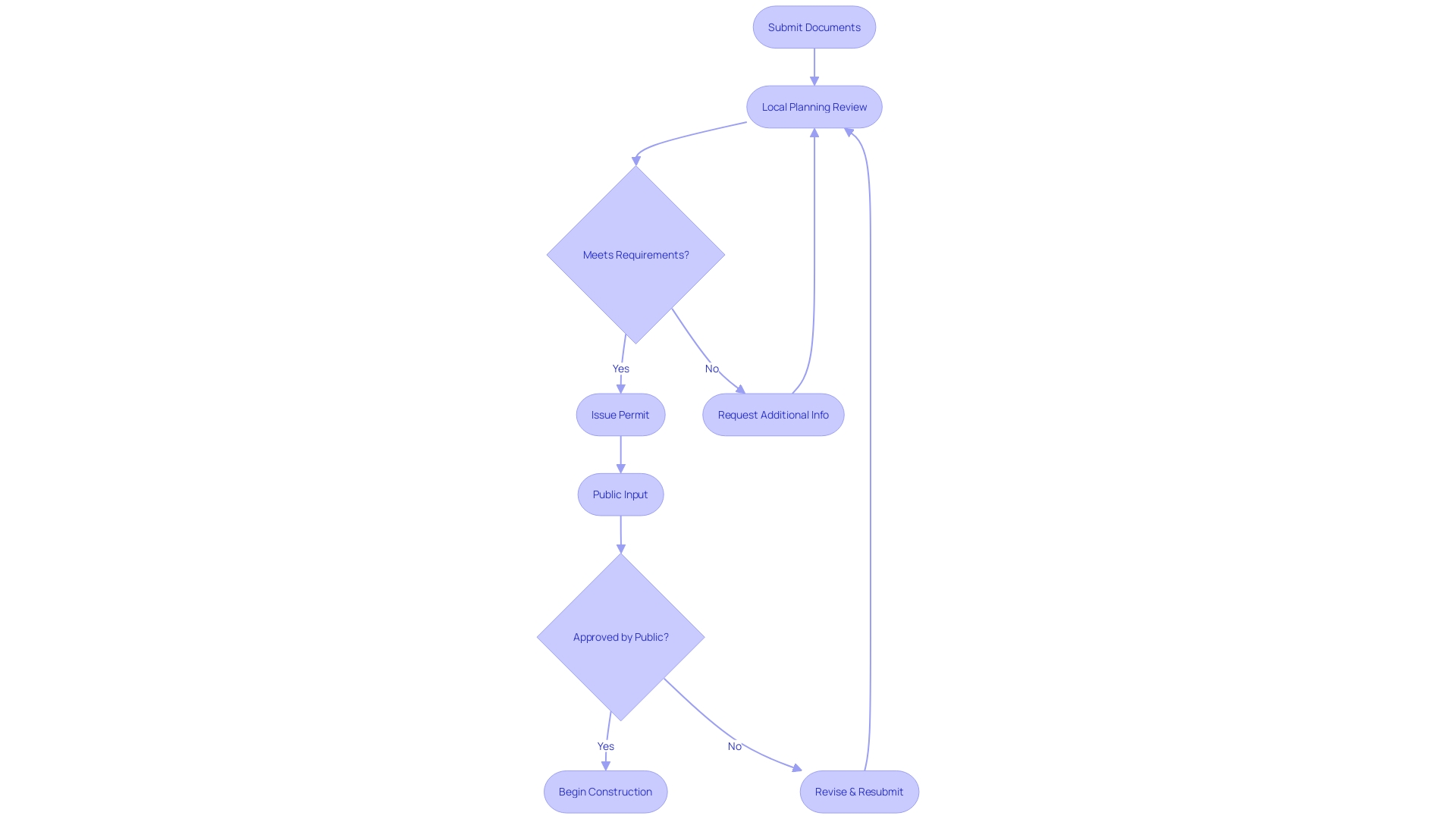
Sign Regulations
Sign regulations play a crucial role in shaping the visual landscape of our communities, balancing aesthetics, safety, and practicality. These rules dictate the dimensions, location, and design of signage on private property to ensure that while businesses can attract customers and convey messages, the overall appearance of a neighborhood is not compromised. Notably, the importance of sign visibility for businesses cannot be understated. For instance, a Honolulu-based restaurant, EbiNomi, faced imminent closure due to a ban on portable signs. Despite its high-quality offerings, the restaurant's concealed location meant that the absence of a simple A-frame sign could render it invisible to potential patrons. This case underscores the delicate balance municipal authorities must strike between urban planning objectives and the operational needs of local businesses. On the other hand, the move by North Yorkshire Council to eliminate apostrophes from street signs, while seemingly minor, has sparked considerable debate about the broader implications of signage on language and culture. Signage, in its essence, is a component of the larger field of semiotics, the study of how meaning is created and communicated through signs and symbols within our environment. Every sign, from the color of a traffic light to the font on a storefront, conveys a message, embodying a complex system of visual communication that is both intuitive and learned. As such, the strategic placement and design of signs are not merely functional but also contribute to the cultural and informational fabric of our spaces. In light of these considerations, sign regulations are more than mere legal requirements; they are a reflection of how we value and interpret the spaces we inhabit.
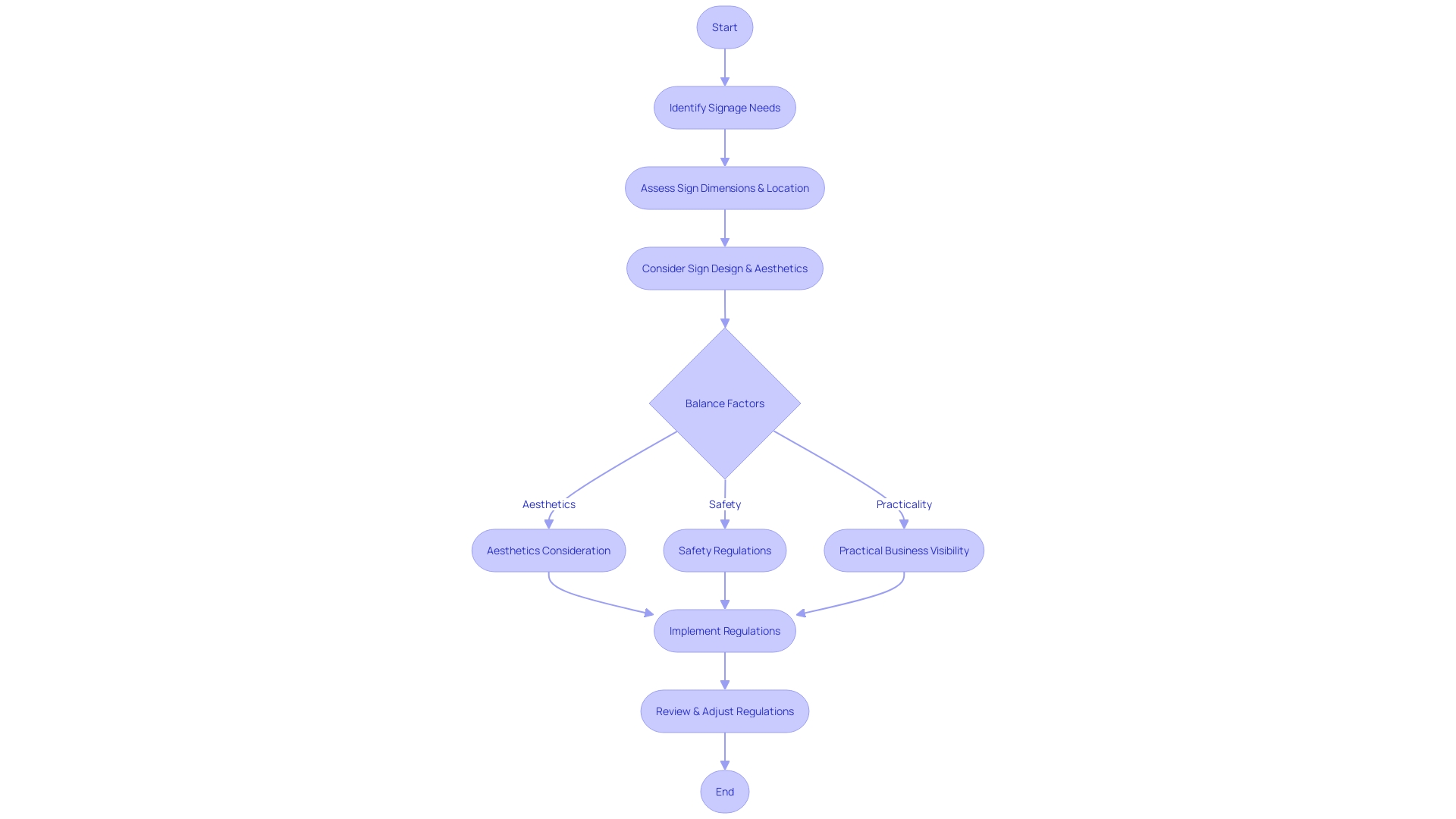
Environmental Impact Assessments
The integration of environmental considerations into the lifecycle of development projects is not only a legal requirement but an essential component of sustainable practices. Recognizing the wide-ranging impacts of construction on ecosystems and communities, the Impact Assessment Act (IAA) amendments, effective as of June 20, 2024, mandate thorough environmental impact assessments (EIAs) for certain developments. These evaluations are crucial for gauging effects on air and water quality, wildlife habitats, and natural resources.
The importance of EIAs is further underscored by recent legislative changes following the Supreme Court of Canada's decision, which now require these assessments to concentrate on federal jurisdiction areas. This move aligns with the collective ethos of industry-leading design and engineering firms, such as ours, which emphasize the importance of environmental permits and EIAs in their operations across 36 countries.
Efforts to minimize adverse environmental effects are also evident in collaborative government initiatives, such as the Memorandum of Understanding between the Ministry of Transportation and the Impact Assessment Agency, which exemplifies the synergy between provincial and federal efforts to protect the environment pre-emptively.
As environmental awareness and regulations evolve, our firm remains committed to advancing projects that significantly contribute to the well-being of communities and ecosystems. This commitment is reflected in our expertise in chemical regulation, LCA, circular economy, soil remediation, and sustainability consultancy—areas that are integral to responsible and profitable project development.
In addition to legal compliance, EIAs serve as a platform for innovation within the consulting sector, offering opportunities to integrate renewable energy solutions and energy efficiency measures into project design. These measures not only support public health and safety but also bring economic benefits by ensuring energy affordability and reliability, thereby addressing energy equity challenges.
This holistic approach to project development, informed by a robust EIA process, enables our team to deliver high-impact solutions that are both environmentally and economically sustainable.
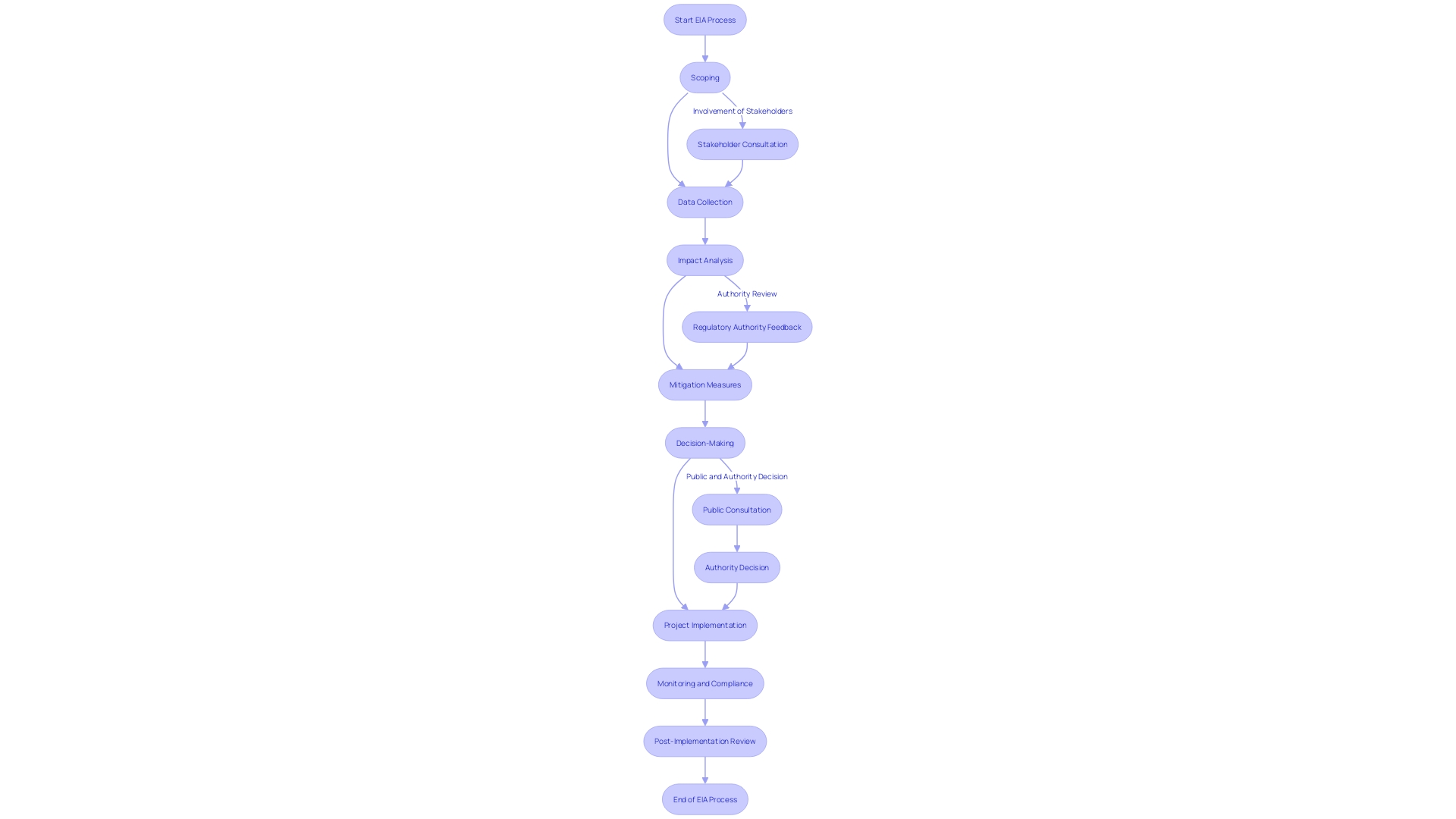
Deed Restrictions, Easements, and Right of Ways
Navigating the intricate landscape of property ownership involves understanding not only zoning laws but also the nuances of various legal instruments that can influence property rights. Deed restrictions, easements, and right-of-ways can significantly shape how property can be used.
For instance, a deed is more than just a certificate of ownership; it is a legal instrument that may outline specific conditions or restrictions on the property's use. These restrictions can affect future development plans, altering the scope of what can be built or modified on the property.
Title, on the other hand, is the legal right to own and use the property. It is transferred via the deed and is essential for establishing ownership. However, with ownership come certain obligations, and understanding the difference between deed and title is crucial for any property transaction.
Moreover, mortgage deeds play a pivotal role in property ownership. They ensure that a property is used as collateral for a loan and outline the rights of the lender to foreclose on the property if the borrower defaults on their mortgage payments.
Property rights can also extend beyond the surface, both above and below. Airspace and subsurface rights can have implications for development, as they may be governed by common law provisions, statutory regulations, or even detached from private property rights for specific public uses such as air travel or tunnel construction.
The intersection of property rights with zoning reform can be seen in cases like Minneapolis, where advocacy for housing affordability and racial justice led to significant changes in residential zoning laws. These reforms aim to address issues such as housing prices, urban sprawl, and segregation, ultimately shaping how property can be developed and utilized.
It is clear that property rights are a complex 'bundle' that is shaped by a myriad of laws and regulations. These rights are not absolute but are defined by collective agreements and regulations that govern our relationship with the physical world. Understanding this multifaceted legal landscape is key to navigating property ownership and development.

Deed Restrictions
Navigating the complexities of deed restrictions can be crucial for directors of land acquisition. These legal caveats are not merely the fine print on a property deed; they are binding conditions that can dictate land use, architectural design, and other specific criteria that future property owners must adhere to. For instance, a case in Minneapolis illustrates how zoning reforms aimed at addressing housing affordability and racial justice have significantly altered what property owners can do with their land. Such transformations in land use regulations reflect the dynamic nature of property ownership rights and the importance of staying abreast of changes that could affect development potential.
In other scenarios, legal challenges arise when deed restrictions clash with broader community interests. In Nevada, for instance, a development agreement faced scrutiny for potentially violating a Supreme Court Settlement Agreement, emphasizing the need for diligent adherence to legal standards and the potential for litigation. Similarly, in Florida, new laws restricting foreign property ownership have upended transactions, highlighting how geopolitical considerations can suddenly alter the landscape of property rights.
These examples underscore the multifaceted challenges faced by land acquisition professionals. Whether it's the pioneering zoning reform in Minneapolis, which has reshaped the city's housing market, or the constitutional debates around exclusionary zoning and its impact on economic growth and equality, understanding the legal terrain is essential. Moreover, as property becomes a focal point for discussions around the American dream, with changing perceptions of prosperity and domestic bliss, the role of deed restrictions and zoning laws becomes even more critical in shaping the future of our cities and the lives of those who inhabit them.
The implications for professionals in land acquisition are clear: staying informed and adaptable in the face of evolving regulations and legal precedents is not just advisable—it's imperative for successful land development projects.
Easements
Easements play a critical role in land management and use, serving as legal provisions that allow the use of land by non-owners for specific purposes. Utility easements, for example, are essential for infrastructure maintenance, providing access for power line installation and repairs. These easements are vital for ensuring that essential services remain uninterrupted.
The importance of utility easements has been underscored by the increasing risk of catastrophic wildfires, particularly in areas like California where utility equipment has the potential to ignite such disasters. Easements allow for crucial clearance and maintenance activities that mitigate these risks. The complexities and challenges of managing these easements are well-documented, as seen in the case of California's investor-owned utilities, which are regulated monopolies tasked with distributing electricity while balancing safety with economic considerations, such as avoiding undue rate increases for consumers.
Recent legislative efforts, such as the proposed Building Infrastructure Safely Act, 2023, in Ontario, seek to streamline the process of locating underground infrastructure without imposing fees. This initiative underscores the significance of managing easements efficiently to prevent damage to critical infrastructure and to keep construction project costs down, reflecting a commitment to safety and economic prudence.
Understanding the nuances of easements extends to recognizing the different types of deeds associated with property ownership. A deed provides proof of ownership, detailing the property's physical description and the identities of the grantor and grantee. Variations like the mortgage deed place a lien on the property as security for a loan, emphasizing the deed's role in signifying rightful ownership and ensuring legal protections for both lenders and borrowers.
Conservation easements, as explained by legal experts, offer a mechanism for protecting natural, scenic, or cultural resources by limiting development on properties. Landowners who enter into such agreements not only contribute to environmental conservation but may also benefit from tax advantages and financial incentives. High-profile legal cases, such as the conviction of individuals for fraudulent easement-related activities, highlight the importance of understanding and correctly implementing conservation easements.
With the integration of new technologies like GIS and the increasing reliance on digital data for property and hazard information, the relevance of easements and property rights remains as significant as ever. This is exemplified by the usage of platforms like PogoData, which garners over 21,000 hits a month, demonstrating the widespread need for accessible and accurate property information.
In conclusion, easements, especially utility easements, are a crucial aspect of land use that affect not only property owners but also the broader public through their impact on safety, environmental conservation, and economic development.
Right of Ways
Rights of way serve as crucial legal instruments that allow individuals or entities to traverse or utilize certain parts of another's land for specific purposes. For instance, this may encompass the establishment of pathways, the construction of sidewalks, or the placement of utility lines. The creation of rights of way often stems from the necessity to provide access to properties or to facilitate the maintenance and distribution of essential services.
A notable instance is the situation in La Guajira, where the deployment of wind energy projects necessitated clear and mutually beneficial agreements between companies and local communities. These communities, which often face socio-economic challenges, require transparent engagement to understand project impacts and share in the resulting benefits. The right of way, in this context, becomes a tool for fostering social acceptance and ensuring equitable distribution of advantages from such developments.
Furthermore, the recent wildfire risks in California highlight the balance that must be maintained between public safety and economic considerations. Rights of way for utility infrastructure, such as electricity lines, become a focal point in managing these risks. The establishment of safety standards for these corridors is not only a legal requisite but also a measure to safeguard communities and utility companies from reputational damage.
In legal disputes, as observed in the case of the First Nation's beachfront property, the delineation of rights of way can become central to resolving conflicts over land access. The interpretation of property deeds and the understanding of legal standing are vital in such scenarios, where the precise wording and historical context of agreements dictate the outcomes of property rights assertions.
Deeds and titles are the bedrock of property ownership and the transfer of rights, including rights of way. A deed, a legal document proving ownership, contains details about the property and stipulations that may affect how it is utilized. It is through the careful examination of such documents that one can discern the nuances of property rights, such as the right to exclude others, which is a fundamental aspect of ownership.
Amidst the complexities of property rights, understanding the legal foundations, including the exclusivity principle, is essential. This principle underscores that while property rights may not inherently grant control over a resource, they do confer the right to exclude others from its use. As rights of way are a form of property right, they too are subject to this foundational aspect.
This understanding of rights of way and property ownership is reinforced by statistics showing a strong desire among Americans to own property, with financial hurdles being a substantial barrier. The interplay between the legal frameworks governing property rights and the socioeconomic status of individuals and communities underscores the importance of equitable access to information and transparent processes in land acquisition and use.
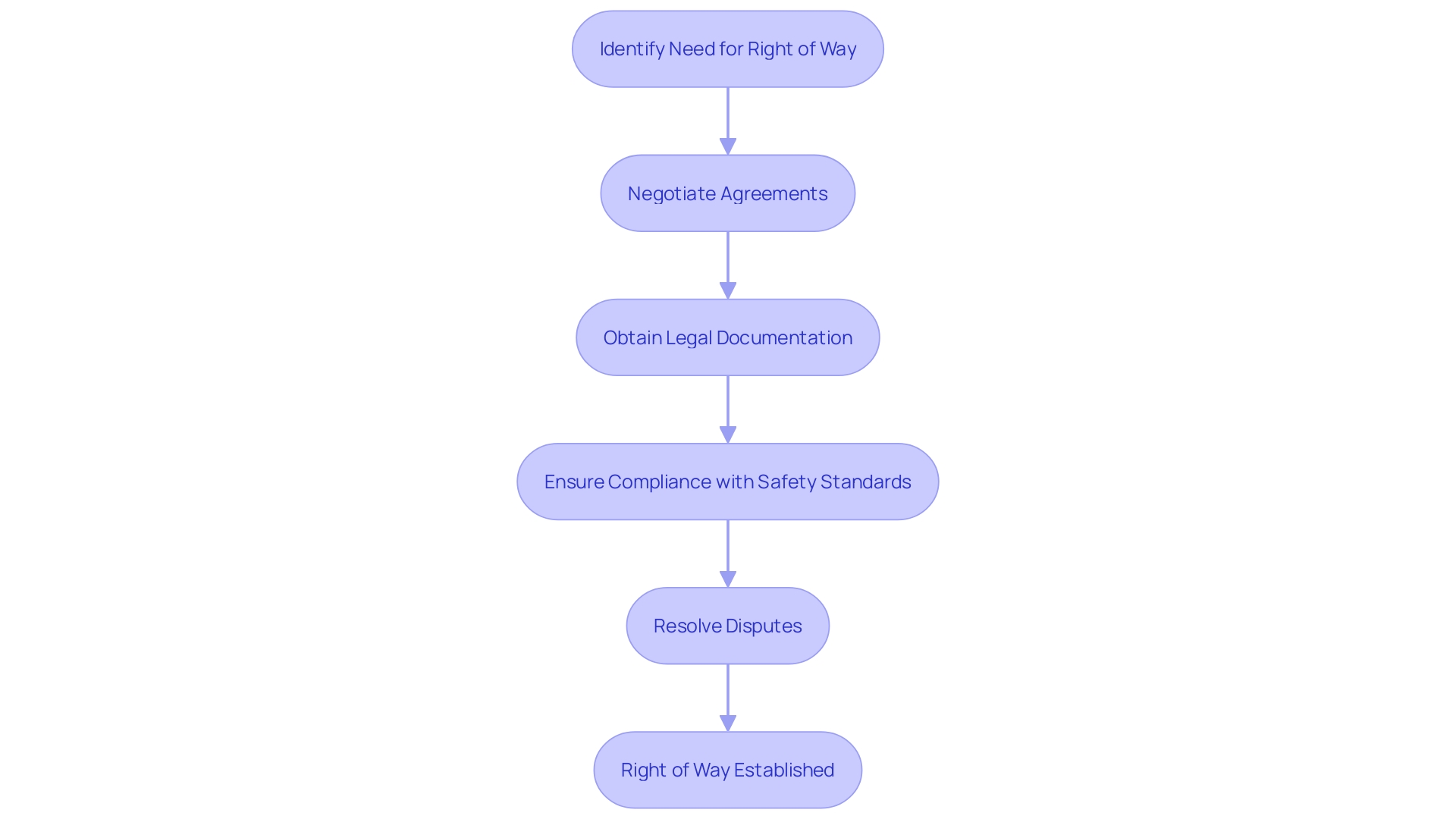
Eminent Domain and Its Implications for Property Owners
Eminent domain allows governments to acquire private property for public use, ensuring owners receive fair compensation. This is not to be confused with property being unsafe or uninhabitable; it's a legal necessity when the government requires land for projects like highways, schools, or parks. For the process to proceed, four criteria must be met: the property must be for public use, the owner must receive just compensation, the process must follow due process, and the property acquisition must be a necessity.
In the real-world application of eminent domain, cases such as the George brothers in Brentwood, Missouri, demonstrate the personal impact. Their father built their property with his own hands, and it carries significant sentimental value beyond its monetary worth. Similarly, the Brinkmann family faced obstacles from local government when their land, intended for a new hardware store, was taken for a park. These stories highlight the complex interplay of property rights, government needs, and the individuals affected.
It's crucial to recognize that eminent domain is grounded in the Fifth Amendment of the U.S. Constitution, granting this power to federal, state, and local governments. Property owners faced with eminent domain should seek legal counsel to navigate this challenging process and ensure their rights are protected.
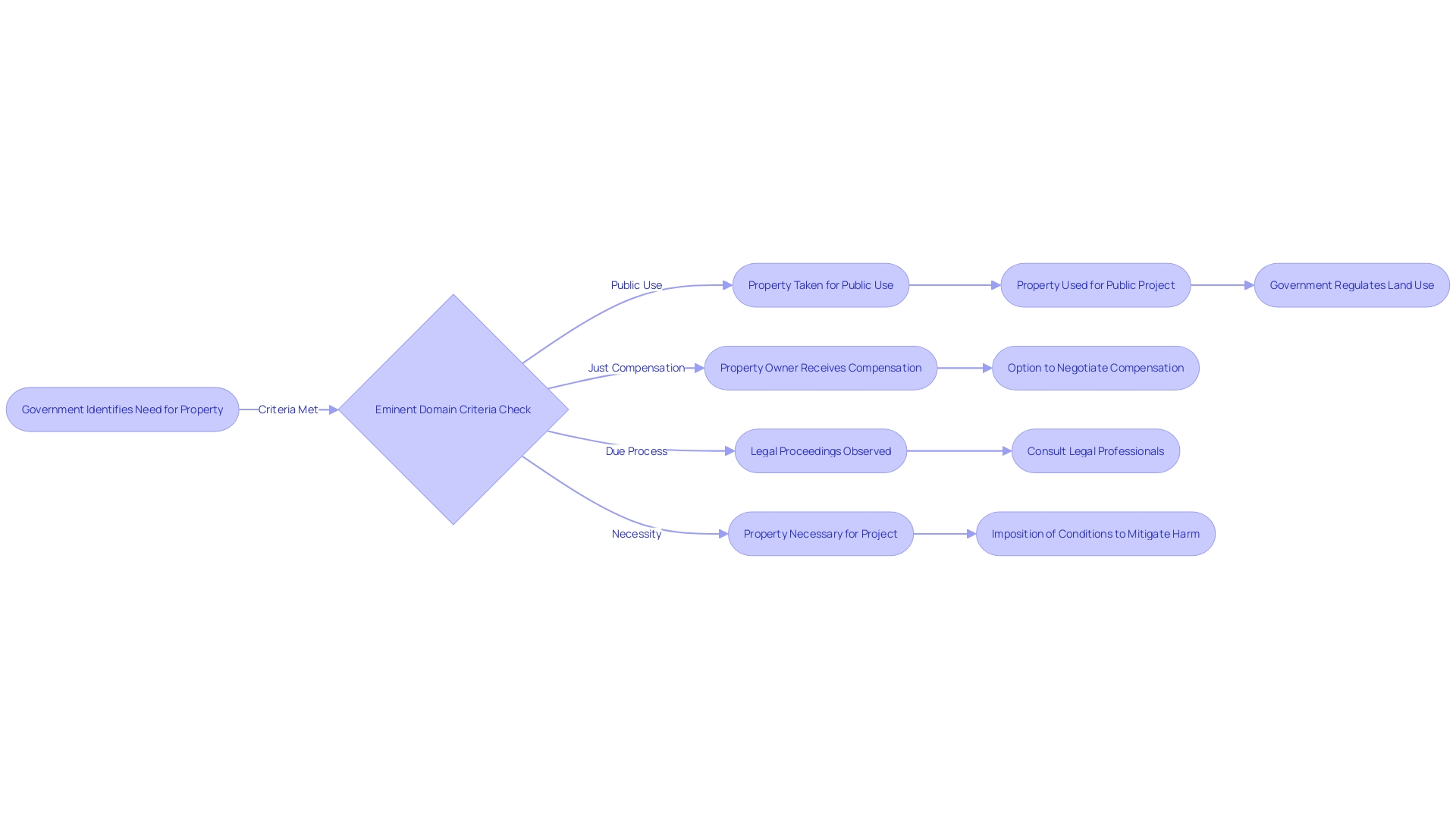
Public Use
The exercise of eminent domain is a government's power to acquire private land for public use, such as the construction of infrastructure like roads, parks, or schools. This power is grounded in legal precedent, with the Fifth Amendment ensuring that when private property is taken, the owner is entitled to just compensation, a principle with roots extending back to the Magna Carta.
In practice, the use of eminent domain has been subject to rigorous criteria to ensure fairness and necessity. Notable cases like the George family's building in Brentwood, Missouri, illuminate the deeply personal impact of eminent domain on property owners. The George Brothers inherited a building handcrafted by their father, symbolizing more than just real estate but a family legacy spanning decades.
Similarly, the Brinkmann family's experience in Southold, New York, underscores the complexities and conflicts that can arise when local governments exercise eminent domain. Despite the Brinkmanns' intentions to develop their property to expand their business, the town's maneuvers culminated in an attempt to seize the land for a park, highlighting the contentious nature of land appropriation even in commercial zones.
Eminent domain does not solely apply to cases where the physical property is taken. It can also be invoked when government actions substantially interfere with the use and enjoyment of private land, such as noise from a government facility that disrupts a residential area or farming operations.
Each instance of eminent domain brings to light the delicate balance between individual property rights and the broader community's needs. As former California Supreme Court Justice Janice Rogers Brown observed, property ownership carries a spectrum of rights, yet those rights are not without bounds. The government's ability to restrict or impose conditions on land use is essential to prevent harm to others, illustrating that while the right to property is foundational, it coexists with the government's duty to serve the public welfare.
The eminent domain process typically begins with a government entity offering to purchase the property. If the owner rejects the offer, the government may proceed to court to have the property condemned in favor of public use, ensuring that the action meets the established criteria of public use, just compensation, due process, and necessity.
Understanding these legal frameworks and historical precedents is crucial for those involved in land acquisition and development, as they navigate the intricate landscape of property rights and governmental authority.

Just Compensation
The principle of just compensation for the taking of private property under eminent domain has deep historical roots, tracing back to English law before Magna Carta, and it was enshrined in the Fifth Amendment of the United States Constitution. This fundamental right ensures that when the government exercises its power to take property for public use, the property owner is entitled to fair market value compensation. The case of Martin and Anthony George in Brentwood, Missouri, exemplifies the personal and irreplaceable value property holds, beyond mere monetary measures. Despite this, the legal framework for eminent domain establishes clear criteria: the property must be taken for public use, the owner must receive just compensation, due process must be observed, and the taking must be necessary. While property rights are paramount, they are not absolute. The government has the authority to regulate land use to prevent harm to others, which can involve restricting uses that may cause flooding, odors, or direct injury. In some instances, rather than prescribing an outright prohibition, the government may impose conditions to mitigate any potential harm. Property owners navigating eminent domain proceedings should consult with qualified legal professionals to understand and protect their rights effectively.

Benefits and Challenges of Adhering to Land Use Regulations
Understanding the intricacies of land use regulations is crucial for property owners, as it can significantly impact both the environment and the economy. One notable example is the management of catastrophic wildfire risks in California, where safety standards resemble a subjective licensing scheme, and mitigation strategies have uncertain costs and effectiveness. The economic tradeoffs for the general public, such as higher electricity rates, and the reputational risks for utilities highlight the complex balance between safety and financial considerations.
Moreover, urban sprawl has been identified as a significant contributor to greenhouse gas emissions, responsible for one-third of the total pollution. This sprawl leads to increased travel distances, reliance on cars, and a loss of natural carbon sinks. The reform of state land use as a climate action tool is crucial, as efficient urban development can help mitigate these effects by promoting compact, mixed-use communities that reduce travel distances and increase energy efficiency. This not only addresses the current housing shortage but also supports sustainable growth.
In Houston, the reduction of minimum-lot-size requirements has facilitated development, illustrating the impact of zoning regulations on housing affordability and urban design. Large minimum-lot-size requirements have been criticized for contributing to sprawl, reduced walkability, and perpetuating racial segregation. These regulations affect the number of homes that can be built, directly influencing housing prices and community structure.
Controversies surrounding property rights, such as the right to exclude, have historical roots and continue to influence zoning and land-use law. The evolution from 'whiteness as property' to the 'Whiteness of property' reflects deep-seated issues of inequality in property rights and their exercise.
Current discussions around land use also involve the protection of farmland against the pressures of urban sprawl. For example, Canada's debate on balancing housing needs with farmland conservation underscores the importance of intergovernmental cooperation to address housing, climate change, and food security simultaneously.
In summary, navigating land use regulations requires a nuanced understanding of their broader implications, including environmental impacts, economic tradeoffs, and social equity. Property owners must stay informed and engaged with the evolving landscape of zoning laws to make informed decisions and advocate for sustainable and equitable development.
Benefits of Compliance
Adhering to land use regulations is not only about maintaining property values and community aesthetics; it also plays a crucial role in preventing incompatible land uses and fostering orderly, sustainable development. These regulations are a foundational element in shaping the economic, social, and environmental fabric of communities.
Sustainable development, which is the process of improving quality of life without compromising future generations' resources, is intricately linked with green building standards and land use regulations. These standards outline methods for constructing and managing buildings that align with eco-friendly and energy-efficient practices. Real estate development is significantly impacted by these regulations, aiming to create a green and prosperous future.
Moreover, government regulations directly influence the cost of new home construction. A report by the National Association of Home Builders (NAHB) highlighted a 44% increase in regulatory costs for a new single-family home over a decade, from $65,224 in 2011 to $93,870 in 2021. These costs, coupled with rising material prices, underscore the importance of regulatory frameworks in real estate economics.
The complexity of zoning is also a factor that invisibly dictates daily life. Zoning determines where people can live, work, and enjoy leisure, which has profound implications for property usage. As an example, wind power, a rapidly expanding source of renewable electricity in the United States, accounting for over 7% of total electricity generation in 2020, must navigate zoning and land use regulations due to its infrastructure requirements.
Case studies, such as the rapid increase in catastrophic wildfire risks in California, illustrate the nuanced balance between safety measures, economic trade-offs, and regulatory compliance, paralleling the considerations in land zoning and property rights. Furthermore, recent news from Hanoi reflects the challenges of real estate development in the face of regulatory hurdles, with over 70% of businesses reporting inefficacy in policies designed to ease funding issues, leading to a 90% drop in transactions.
Zoning, therefore, is not just a technicality; it is essential in securing the well-being of communities while balancing economic progress and environmental stewardship. As regulatory systems evolve, the aim is to refine these frameworks to better serve the collective interests of society, as evidenced by discussions among regulatory experts and policymakers on win/win regulatory reforms.
Challenges of Compliance
The intricate dance between property ownership rights, land zoning, and use regulations often leads to a complex interplay of challenges for property owners. Navigating this terrain requires a keen understanding of diverse factors that influence land development, such as the balance between safety standards and economic trade-offs, as experienced by California utilities in managing wildfire risks. These utilities face reputational risks, heightened by media scrutiny, similar to the public attention received by land regulations.
Minimum lot size regulations, as examined by the Urbanity Project at George Mason University, exemplify one of the most significant land-use statutes that burden both prospective buyers and existing homeowners with elevated costs. The impact of land use regulation is profound, as it extends beyond property boundaries to affect climate action. Urban sprawl, for example, contributes substantially to greenhouse gas emissions by promoting longer travel distances and greater car dependency.
Moreover, the use of land regulation as a tool for public interest and sustainable development is a global phenomenon, as highlighted in recent comments regarding Scotland's land market regulations. In the context of housing affordability, changes to policy can lead to uncertainties, such as the shift in affordable housing criteria in the UK's New National Planning Policy Framework (NPPF).
The challenges of adhering to land use regulations are not insurmountable, but they demand a sophisticated approach that takes into account the socio-economic and environmental repercussions of land development. It is this multifaceted understanding that ultimately guides successful property ownership and sustainable development.
Conclusion
In conclusion, property ownership is a complex and multi-faceted legal right influenced by historical precedents, collective agreements, and modern legislative frameworks. It extends beyond mere possession to include a range of rights and responsibilities in different contexts. Property ownership encompasses more than just land surface rights; it also includes vertical and subterranean elements.
Common law historically recognized access to sunlight or wind as limitations on the vertical use of neighboring properties, while airspace above a certain altitude is no longer part of an individual's property rights due to the rise of air travel. Subsurface rights are detached from surface property rights, allowing for the construction of tunnels beneath private land. Property rights are influenced by collective agreements and legal frameworks that define and regulate relationships between people concerning physical resources.
The evolution of collective property rights has led to principles that govern sustainable collective management of natural resources. Strategic objectives at various governance levels can also influence property rights, such as Scotland's land reform initiatives aimed at addressing historical land ownership inequalities. Land trusts serve specific purposes, such as anonymizing ownership or conserving natural resources.
Open data plays a pivotal role in land administration, but effective data use must be coupled with measures to ensure equity. Overall, understanding property ownership requires a comprehensive understanding of its multi-dimensional nature and the various factors that shape it. Compliance with land use regulations presents both benefits and challenges, as it ensures orderly and sustainable development while also imposing constraints on property owners.
By navigating these complexities and adhering to regulations, property owners can effectively exercise their rights and contribute to the well-being of communities.




